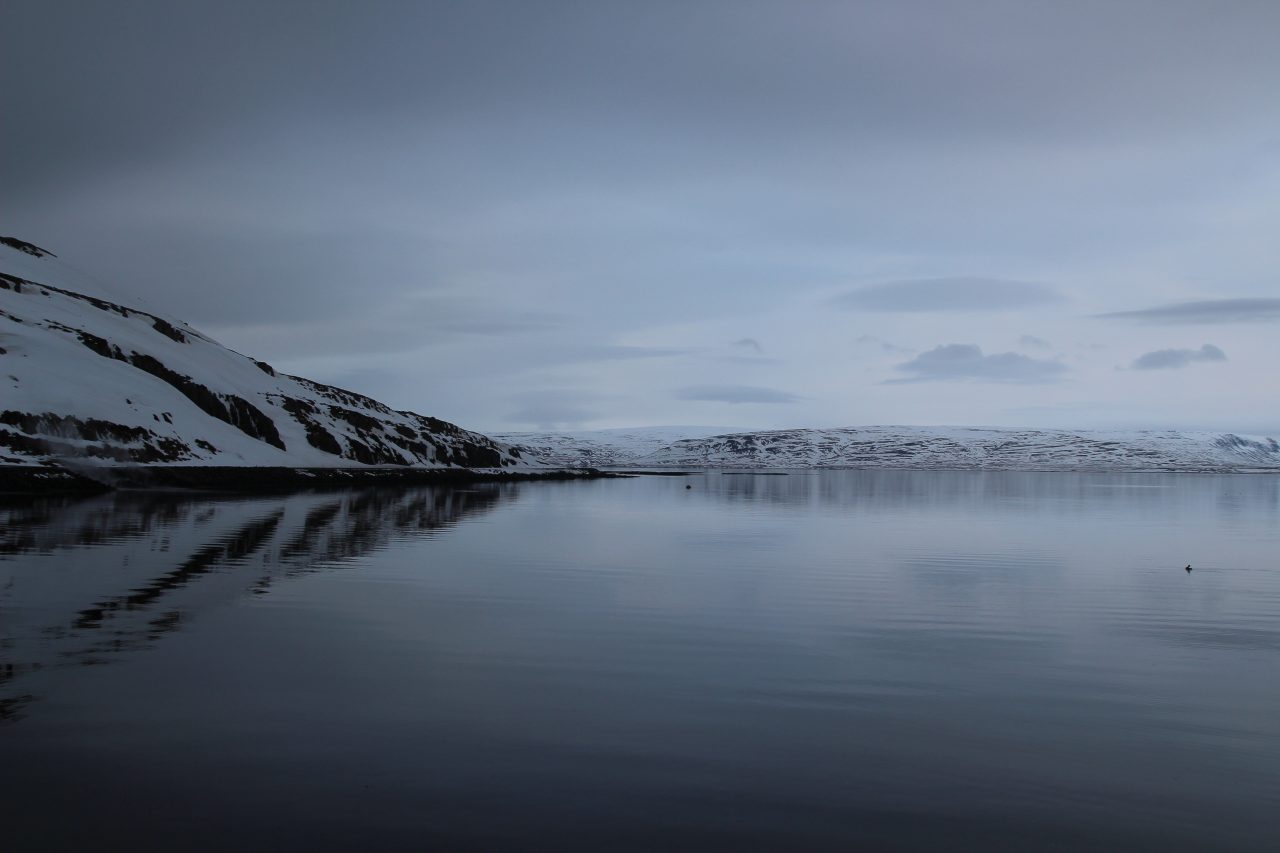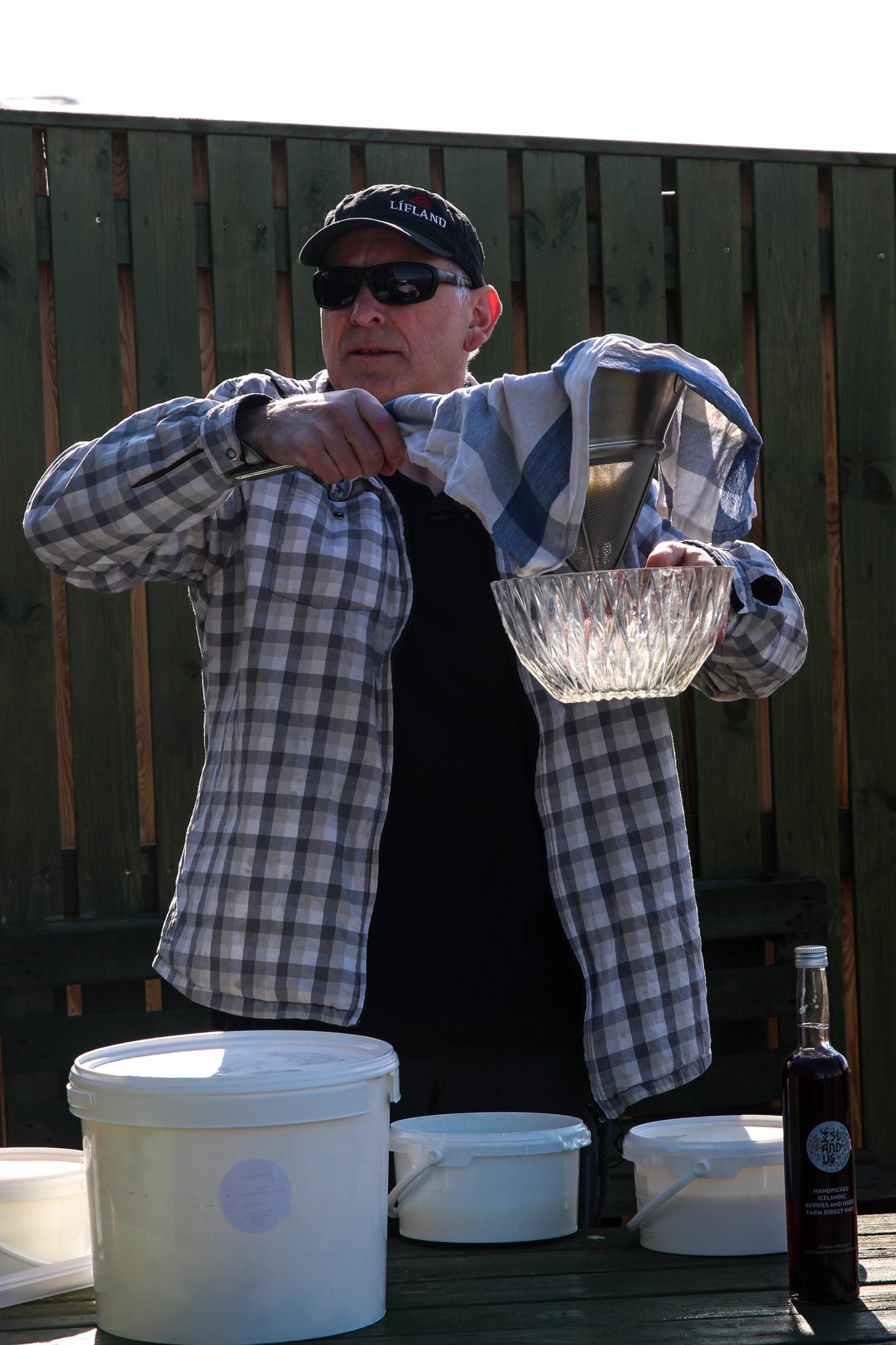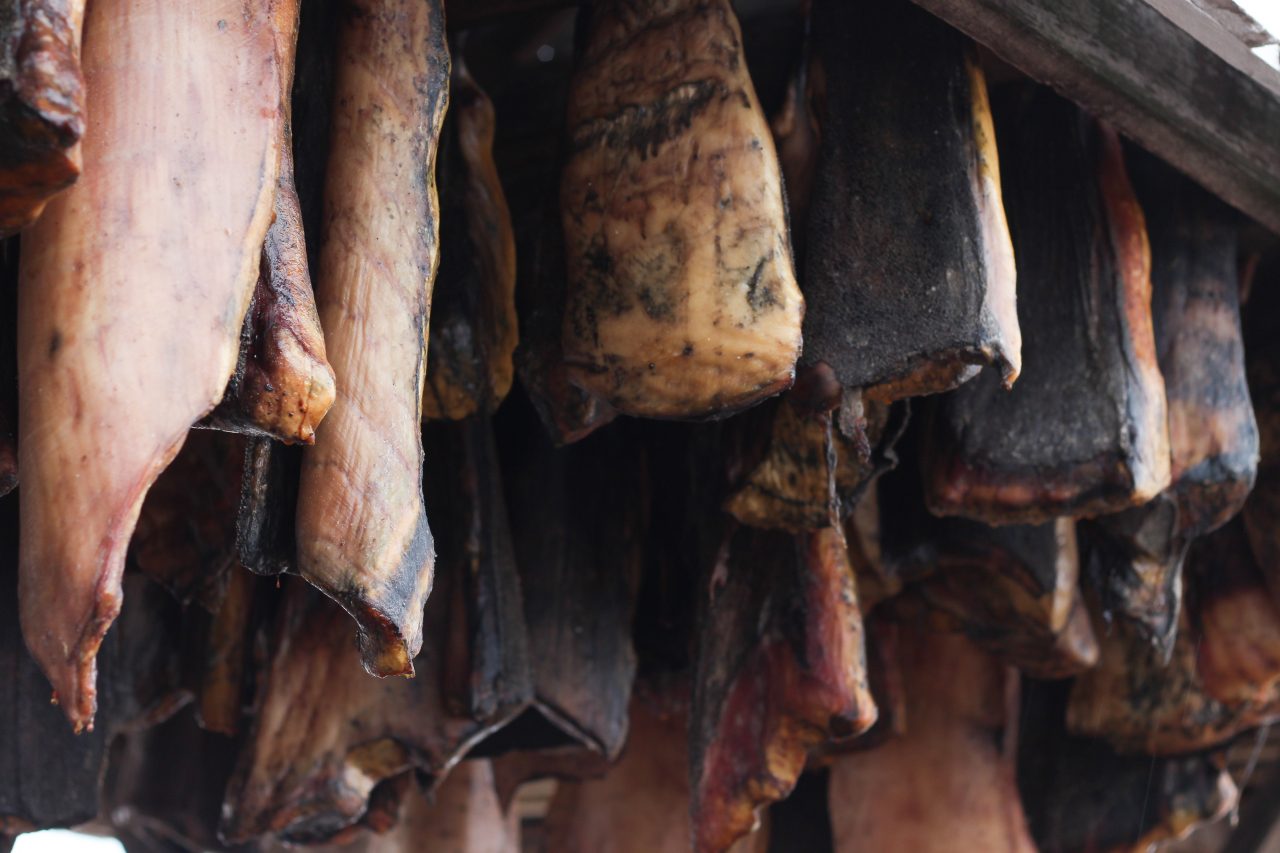Text: Veera Kinnunen
Photos: Birgitta Vinkka
Scientific as well as popular and commercial interest in the complex relations between humans and microbes has grown exponentially during the past few decades. The steadily increasing scientific research showing connections between human wellbeing and the microbial diversity of the gut has grown into a full-blown ‘microbiomania’ (Eisen 2014): an exploding interest in experimenting with human-microbial relations both in scientific, commercial and lay practices. Microbes are longer taken as a thread that are better to be eliminated once and for all – despite the fact that not all of them are dangerous. Quite the opposite, the loss of microbial diversity in urban spaces and bodies has become an increasing concern. The celebration of microbial diversity, also coined a ‘post-pasteurian’ (Paxon 2008) or ‘probiotic’ (Lorimer 2020) turn has resulted, for instance, in revival of traditional practices such as fermenting and sourdough making as well as experimenting with novel healthcare solutions such as faecal transplants or development of probiotic supplements .
How, then, does this new microbial turn affect tourism? What can we learn about tourism by getting proximate with microbes?
We got an opportunity to travel to Iceland to take part in an interdisciplinary workshop ‘Craftlife’ on human-microbial relations in collaboration with University of Iceland’s project Symbiotic living. Travelling all the way to Iceland to get proximate with microbes, provided us a chance to rethink proximity tourism through engaging with the microbial world.
URBAN MICROBIAL VIBES
Before the actual excursion to the countryside of Iceland, we get acquainted with the urban microbial culture in the city of Reykjavik. We wander around the city and observe how microbial diversity is increasingly celebrated and cherished in contemporary urban culture. We pop into a small falafel joint for a lunch, and accompany our portions of falafels with a bottle of self-brewed kombucha with funky ingredients. Veera tries one seasoned with pepper (tastes a bit like canned jalapenos!), and Birgitta something with ginger. We taste a selection of natural wines of the week in a downtown bar with a local, young and hip clientele. The taste of the natural wine is quirky and distinctive, almost every sip is different, and, to be honest, not entirely pleasant. It’s easy to imagine how their vibrant bacteria and yeast start a surprise party in our guts.
Naturally, we cannot avoid pumping into the national pride of Iceland, skyr, the ‘secret’ behind the beauty and strength of Icelandic women, or so the adverts keep telling us. The main skyr brands – Ísey and KEA – that we encounter in the huge advertisement boards around the city as well as in the shelfs of the grocery stores, are already familiar to us from at home. We first try the one that looks most authentic, the unflavoured KEA skyr in a pale blue package. Natural skyr is so sour that it’s almost bitter, and so thick that it gets stuck in our palates. We give in on authenticity, and turn to flavoured options from both brands; we try blueberry, vanilla, and apple pie. The generic and almost unbearably sweet tastes highlight that these skyrs have been homogenized both taste- and microbe-wise to meet the requirements of the universal, international markets.
SKYR: TRAVELLING IN TIME WITH MICROBES

Our excursion to the microbial cultures in the countryside of West Iceland begin with a visit to a Erppstadir dairy farm. The farm comprises of a cowshed for relatively small cattle, and a creamery which includes a small café for hosting visitors. Our host, the farmer and dairy master Þorgrímur Einar Guðbjartsson has studied dairy making in Denmark, but tells us that everything he has learned about skyr making, he has learned from local people in his own village. At present, he produces artisan ice cream and skyr in his small dairy, and welcomes tourists on-site to try the taste of the authentic skyr. He gives us an ad hoc demonstration of how he imagines that skyr was made in the olden days. He demonstrates that skyr was made without rennet, using just old skyr as a starter. When making skyr without rennet, one must be mindful of warmth. In the old times, the skyr was probably left to stay in the warmth of the stove. When the substance has become sour and thick, it is run through a cloth, so as to separate whey from the skyr. Þorgrímur remembers that when he was young, he was once offered skyr by old people who did not have electricity or running water. The skyr tasted horrible. He says that he would give anything to be able to taste that skyr now – maybe his taste buds would appreciate its ancient microbial lineage. Indeed, the history of Icelandic skyr goes back to more than a millennium. According to the origin story, the skyr culture arrived to Iceland in the armpits of the first Norse settlers. For centuries, nutrient-rich skyr produced as a side-product of butter-making, provided an important source of nutrition in the countryside, where the valuable butter was produced for trade.

Now the cultural heritage of skyr has been rebranded, and although the microbial culture in the skyr is far from original (in fact, even our host gets his starter – if needed – from one of the international brand’s products), the imaginary of the unique and ancient microbial culture is vibrant (read more about cultural heritage of skyr here).
We taste the skyr, mixed with whipped cream and add some home-made dandelion and rhubarb syrup on top of it. The creamy and soft taste of skyr takes me immediately to a personal time travel to my own childhood, as I often had a bowl of homemade “rahka” (Finnish equivalent to skyr) with strawberries for a snack after I got home from school.
CURED SHARK: COMMODIFYING FAMILY HERITAGE
Our journey continues to Bjarnarhöfn to a Shark Museum run by two brothers, Guðjón Hildibrandsson and Kristján Hildibrandsson, in whose family shark catching and fermenting has played a major part for centuries. These two men have succeeded in sustaining their family’s traditional livelihood by turning the income from shark fishing to shark-based tourism. Currently, they run a flourishing visitor centre based on material history of shark fishing. Although Hildibrandssons do not practice shark fishing anymore, they prepare the traditional Icelandic delicacy, hákarl, from by-catch sharks for tourists to savour. The brothers provide us a well-choreographed presentation on the skill of catching and fermenting the Greenland shark. This fermented curiosity is made by burying the loafs of fresh shark meat in the ground for a few weeks, after which the putrefied pieces are hung to dry in a drying shack for several months.

We are offered small cubes of the cured shark, and we gulp it with a tiny glass of brännvin. It has a weird, ammoniacy and fishy, but not utterly unpleasant taste. From our Icelandic companions we hear that this specimen is quite mild as it has probably been prepared specially for tourists, which means that the taste is not as strong as it would be for the local tastes.
The microbiologist working in the Symbiotic Living project, Viggo Viggó Þór Marteinsson, tells us that his research group has taken samples of the shark before and after fermenting and conducted genome sequencing to the samples. The preliminary findings are ‘interesting’, showing that the microbial community in the meat indeed changes drastically during the process. The tests reveal a number of microbes that have not been listed in the genome databases, and probably there are a number of ‘unknown unknowns’, too. We learn that although it is still a mystery what actually happens during the process of curing, it is for certain, that the alkality of the meat rises rocket high, which destroys the pathogens in the meat. The process also turns the meat safe to eat, as unprocessed meat of the Greenland shark is toxic.
BLUE LAGOON: IMMERSING WITH CYANOBACTERIA
Our journey ends in a must-experience of every Iceland visitor: dipping in the Blue Lagoon. Blue Lagoon is by far the most famous man-made tourist attraction in the whole of Iceland. Blue Lagoon combines the Icelandic bathing culture and health benefits of geothermal water with luxurious spa environment. Unlike public swimming pools, the visitors are encouraged to take pictures while floating in the blue waters of the spa, which is why the picturesque imagery of floating in the lagoon has spread efficiently through the social media all around the world. Despite the seeming natural serendipity of this imagery, the Blue Lagoon is a naturecultural phenomena through and through. The water in the pool is a by-product of cooling the geothermal plant Svartsengi which is located just next to the spa. In fact, Blue Lagoon is a result of an environmental accident, as the cooling waters – a mix of geothermal water and seawater – were supposed to be absorbed into the ground, but apparently the lava bed turned out to be impermeable, which created a reservoir of water. The story goes that locals first started to bathe in the reservoir (one wonders, who was the genius who first came up with the idea of bathing in power-plant waste water?), and which some years later was turned into a health spa and complemented with safe pool structures.
Why is this romantic and (quite frankly) somewhat banal tourist attraction microbially interesting, then? When we dip into the Blue Lagoon, we are actually swimming in – or rather, with – particular symbiotic micro-organisms: Cyanobacteria. The promised health benefits of the water is based on a unique combination that is generated when the blue-green algae (cyanobacteria) in the sea water is merged with the silica mud from the volcanic rocks.
We Finns have only heard of cyanobacteria in a negative context, as they are an annual topic in Finnish newspapers in the late summer, when these notorious algae species multiply and bloom in warming lakes and cause intoxication to people and animals. We now learn that there are several different species of cyanobacteria, and that they have actually played an important role in the evolution of the Earth and the biosphere. In fact, cyanobacteria are the ancestors of the chloroplast, and they are understood to have been responsible for the oxygenation of the atmosphere and the oceans! This thought gives certain metaphorical depth to the confusing experience of floating in the milky blue liquid with a bunch of copulating honeymooners: isn’t swimming with cyanobacteria a bit like connecting with the primordial state of life?
CULTURAL TOURISM WITH MICROBES
Our research project Envisioning Proximity tourism with New Materialism seeks to develop proximity tourism in the times of the Anthropocene. This time we have travelled far to get proximate with microbes.Could we travel with microbes without going far?
Strange and exciting microbial cultures are not just something that are over there, they are right here, everywhere around and even within us, on our skins and in our guts. Therefore, a whole new world of microbial cultures can be discovered wherever we are. Learning about and trying out diversity of local innovations, exported curiosities, and historical microbial cultures, such as different traditions of baking and preserving foods, or making dairy products, provides exhilarating experiences not only for occasional visitors but also for the local inhabitants. Thus, travelling with microbes does not necessitate horizontal mobility – one can travel vertically simply by digging where one stands. When travelling with microbes, the concept of Cultural tourism gets a whole new twist!